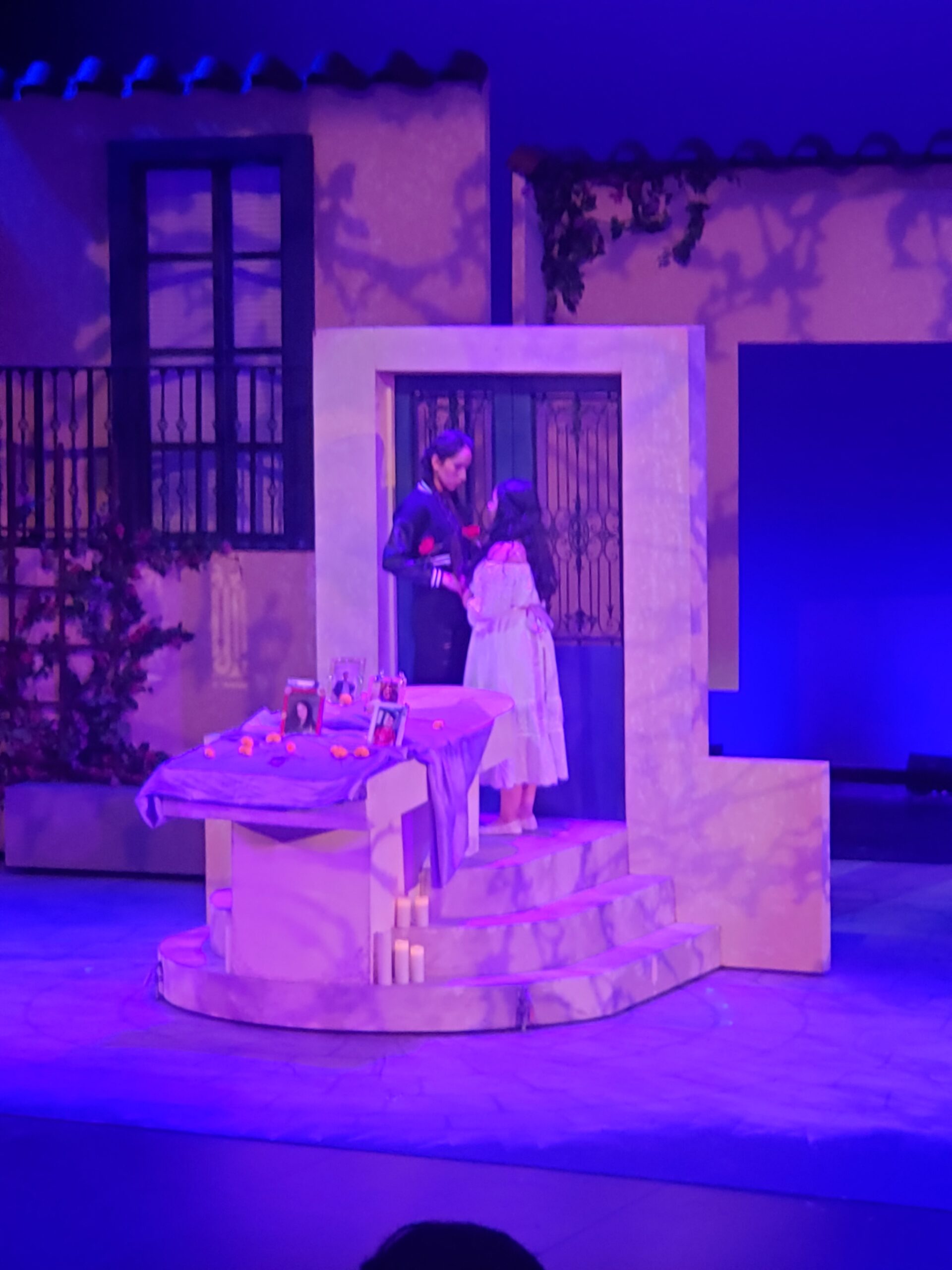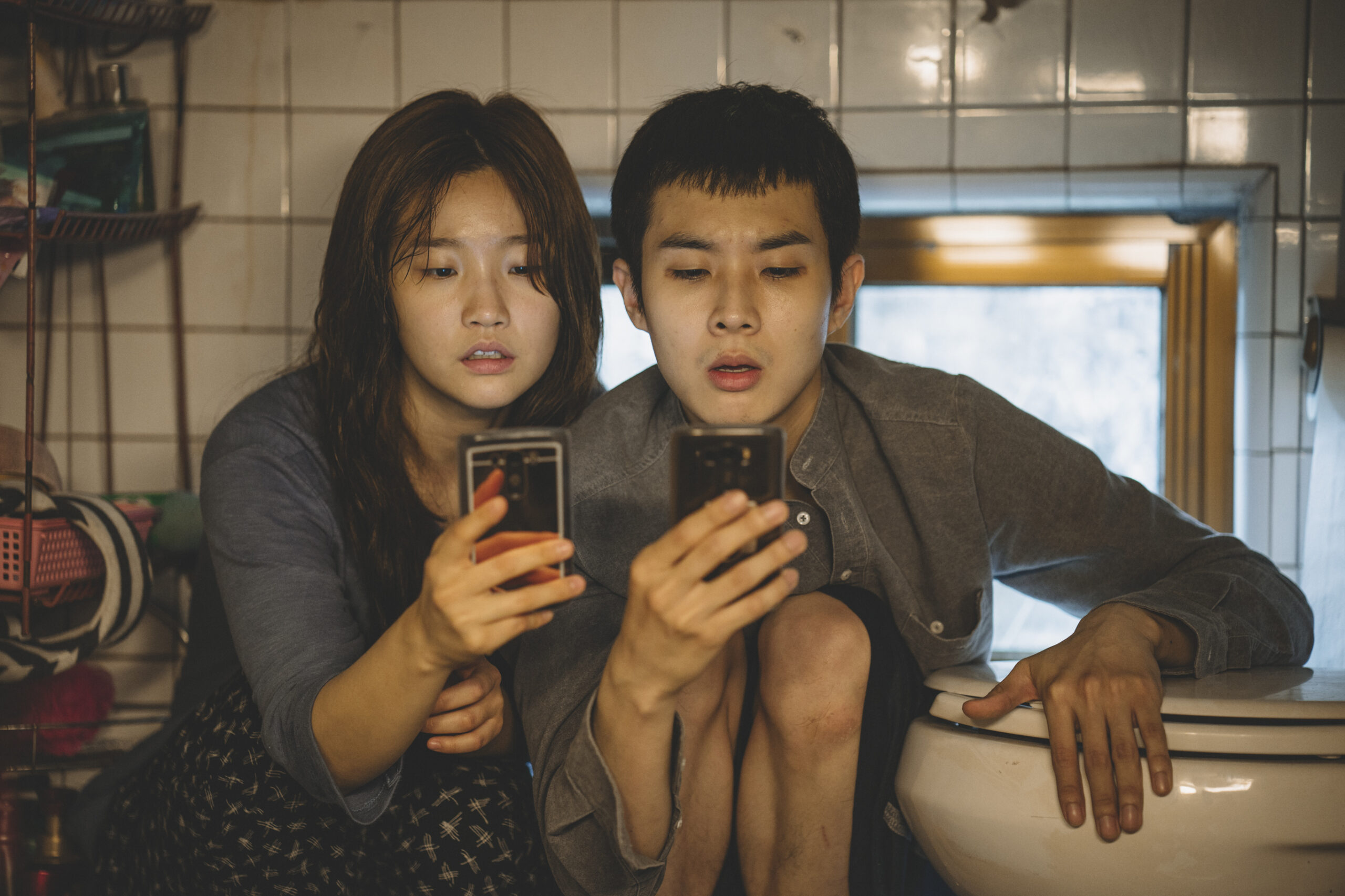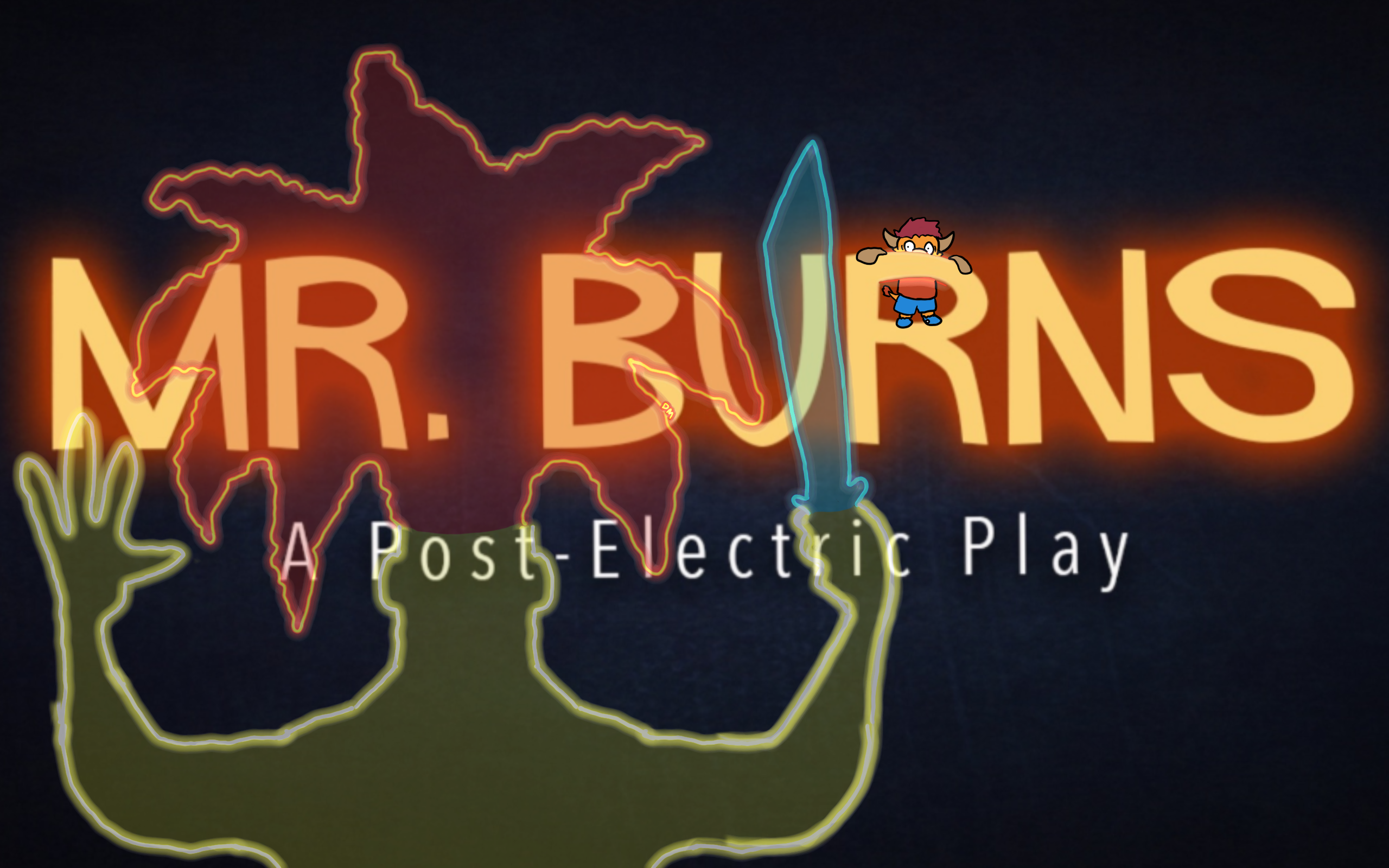Romeo, portrayed by Imelda C. Franco (left) and Juliet, portrayed by Emma Soltero, come together at the conclusion of opening night at CSUDH’s Romeo & Juliet adaptation simply titled “R&J.” The production featured LGBTQIA+ and LatinX representation as well. Photo by Joseph Sanker/Bulletin
By Joseph Sanker Staff Reporter
“Help! ¡Ayuda! She’s Dead! ¡La Muerta!” screamed Lady Capulet, portrayed by Andrea Velazquez. This is exclaimed after Lady Capulet discovers her daughter, Juliet’s lifeless body during the final act of “R&J.”
“R&J,” an adaptation of William Shakespeare’s “Romeo and Juliet,” was presented earlier this month by California State University, Dominguez Hills’ Department of Theatre and Dance.
Set in modern-day Verona, California, the play had a seamless runtime of two hours and 20 minutes with a 15-minute intermission. The production steadily entertained audiences all four nights with comedy, music, dance and choreography numbers soundtracked by Spanish guitar-laden music.
In the original “Romeo and Juliet” and many adaptations, Romeo is cast as a male in the theater production. However, in the CSUDH production of “R&J,” Romeo is a female character, “Romea” and is portrayed by Imelda C. Franco.
Kelly Herman, professor of theatre at CSUDH and co-director of “R&J,” shared the inspiration for specifically casting two Latinas for the characters of Romeo and Juliet.
“I had two students several years ago that were Latinas who were in love…they were terrified of telling their parents and they’re like ‘You don’t understand, you’re not Latina,” Herman said in a zine that accompanied the adaptation.
The zine, titled “Deconstructing R&J,” was a collaboration between students in Women’s Studies 490: Senior Seminar and Design 470: Portfolio II. It was inspired by CSUDH’s retelling of “Romeo and Juliet” and includes stories and articles centered around the themes of “R&J.”
One article included in the zine was “A Night with The Cast and Crew of R&J” by Carerra Williams, which discusses the adaptation in greater detail and includes an interview with the cast and crew of the play.
In the interview with Williams, Kimberly Huth, co-director of “R&J” and associate professor of English at CSUDH, also commented on the use of a Shakespearean play as a vehicle to discuss issues in communities.
“We can make use of Shakespeare’s position as a cultural figure to talk about the things we want to talk about. This is what this campus and this cast wants to talk about and Shakespeare’s just a tool to do that,” Huth said.
In her zine article, Williams also states the importance of representation in a theatrical play such as “R&J.”
“If people don’t see healthy, loving, supportive representations of relationships between people of color and queer people, it’s difficult, if not impossible for you to see it for yourself,” Williams said. “So, a [theater] performance where queer women of color are given the space to fall in love and have complexity is new territory even in 2023.”
Another article in the zine titled “Heteronormativity Hurts Queer Teens,” written by Shalece Prejean, uses “R&J” as an example of how heteronormativity can harm LGBTQ+ youth.
“Some teens come from nuclear families who believe that being in a heterosexual relation is the perfect relationship, which can lead to queer teens facing suicide due to fear of family rejection,” Prejean said. “Having parents who aren’t accepting adds to the need to feel loved from somewhere else. [Romea and Juliet] wanted to be together so badly that they felt the need to fake death and later die together.”
A theater program that accompanied the zine for the production of “R&J” included a director’s note that informed theater-goers of the overall underlying message regarding the CSUDH production.
“Lin Manuel Miranda said, ‘Love is love, is love, is love’ when speaking at the Tony Awards following the tragic 2016 shootings at a gay nightclub in Orlando. It is up to us to learn from R&J and make love, as Miranda so passionately suggested, our response to hatred, bias and intolerance.”


